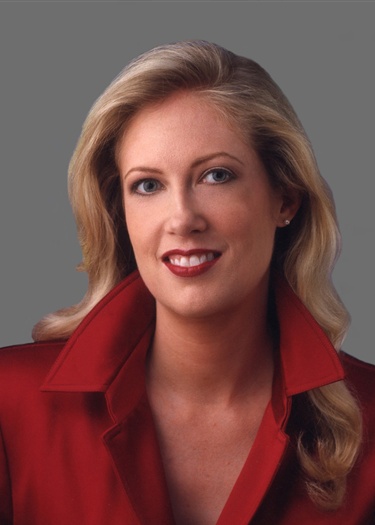Employee Benefits and Executive Compensation Update
Ready or Not, Here They Come; Prepare Your Tax-Qualified Plan for 2024 Changes Now
Part of our ongoing series providing a more in-depth analysis of certain employee benefit provisions of the SECURE 2.0 Act.
The SECURE 2.0 Act of 2022 (SECURE 2.0), which made sweeping changes to the rules governing tax-qualified plans, contains numerous changes that take effect in 2024. Many of the key changes for defined contribution plans, as described below, will require advanced planning in light of the time needed to communicate with participants regarding election changes and for recordkeepers to implement changes to the plan’s operation or documentation. Plan sponsors should take action now to determine which of the following January 1, 2024 changes may be applicable to their plans.
- Treatment of Student Loan Payments as Elective Deferrals: Employers will be allowed to make matching contributions under 401(k) plans, 403(b) plans, or SIMPLE individual retirement accounts (IRAs) if an employee makes “qualified student loan payments,” which are payments made toward debt incurred for the employee’s qualified higher education expenses. The plan must treat such matching contributions in the same manner as matches made with respect to other participant 401(k) contributions.
- New 401(k) Plan In-Service Withdrawals Permitted.
- Emergency Expenses: 401(k) plans will be allowed to offer participants one annual penalty-free early withdrawal of up to $1,000 for emergency expenses.
- Domestic Abuse: 401(k) plans may allow participants who experienced domestic abuse to make a penalty-free withdrawal from their plan accounts up to the lesser of $10,000 or 50% of their account. The law allows plan participants to self-certify that they have experienced domestic abuse and to repay the withdrawn money over three years.
- Emergency Savings Accounts: Plans can offer pension-linked emergency savings accounts to non-highly-compensated employees. Employee contributions must be made on an after-tax Roth basis and are capped at $2,500 or such lesser amount determined by the employer. If the cap is reached, additional contributions can be directed to the employee’s Roth plan account or stopped until the balance falls below the cap.
- Involuntary Cash-Out and Auto-IRA Rollover Dollar Limits: The involuntary cash-out limit will increase from $5,000 to $7,000 for terminated participants. In addition, if a participant’s balance is equal to or less than $7,000, plan sponsors may transfer the balance of the account from the plan into a qualified IRA without the participant’s consent if the participant cannot be located or is not responsive, provided that certain notice and other requirements are satisfied. Plan sponsors will still be allowed to automatically cash out benefit amounts equal to $1,000 or less in a lump-sum distribution directly to the participant.
- Distribution Rules for Roth-Designated Accounts in Employer Retirement Plans: As of January 1, 2023, SECURE 2.0 increased from 72 to 73 the triggering age for starting required minimum plan distributions from tax-qualified plans (RMDs). Currently, Roth 401(k) accounts in tax-qualified employer plans are subject to the RMD rules, while individual Roth IRAs are not. Beginning in 2024, SECURE 2.0 eliminates RMDs for tax-qualified employer Roth plan accounts, including for those participants who already started taking lifetime RMDs (although an RMD attributable to 2023 but payable in 2024 must still be taken). RMDs for Roth accounts in employer retirement plans are required to be taken by the participant’s beneficiary upon the participant’s death.
- Catch-Up Contributions Limited to Roth Basis: Currently, 401(k) plans may permit participants who have attained age 50 to make additional “catch-up” contributions on either a pre-tax basis or an after-tax basis. Starting in 2024, catch-up contributions must be treated as after-tax Roth contributions for catch-up-eligible participants whose wages exceeded $145,000 in the previous calendar year. As a result, plan sponsors with participants whose wages exceeded $145,000 in the previous calendar year must either (1) ensure that their plan requires Roth catch-up contributions for such participants or (2) preclude those participants from making catch-up contributions if the plan sponsor does not amend the plan to add the Roth feature.
Action Items: Plan sponsors should
- take action now to consider the impact of the required changes
- consider whether optional design changes should be made
- reach out to their 401(k) recordkeepers to see whether
- the recordkeeper needs more information from the plan sponsor in order to implement the required changes
- the recordkeeper’s system can implement the optional changes
- work with counsel to determine
- what plan amendments will be needed
- what disclosures and related communications to participants will be advisable or required
Please contact a member of our team if you would like to discuss any of these changes or action items.
Knowledge management lawyer Katie Dean and summer associate McKenna Aune* contributed to this Sidley Update.
*not admitted to practice
Attorney Advertising—Sidley Austin LLP is a global law firm. Our addresses and contact information can be found at www.sidley.com/en/locations/offices.
Sidley provides this information as a service to clients and other friends for educational purposes only. It should not be construed or relied on as legal advice or to create a lawyer-client relationship. Readers should not act upon this information without seeking advice from professional advisers. Sidley and Sidley Austin refer to Sidley Austin LLP and affiliated partnerships as explained at www.sidley.com/disclaimer.
© Sidley Austin LLP
Contacts

Offices
Capabilities
Suggested News & Insights
- Stay Up To DateSubscribe to Sidley Publications
- Follow Sidley on Social MediaSocial Media Directory
